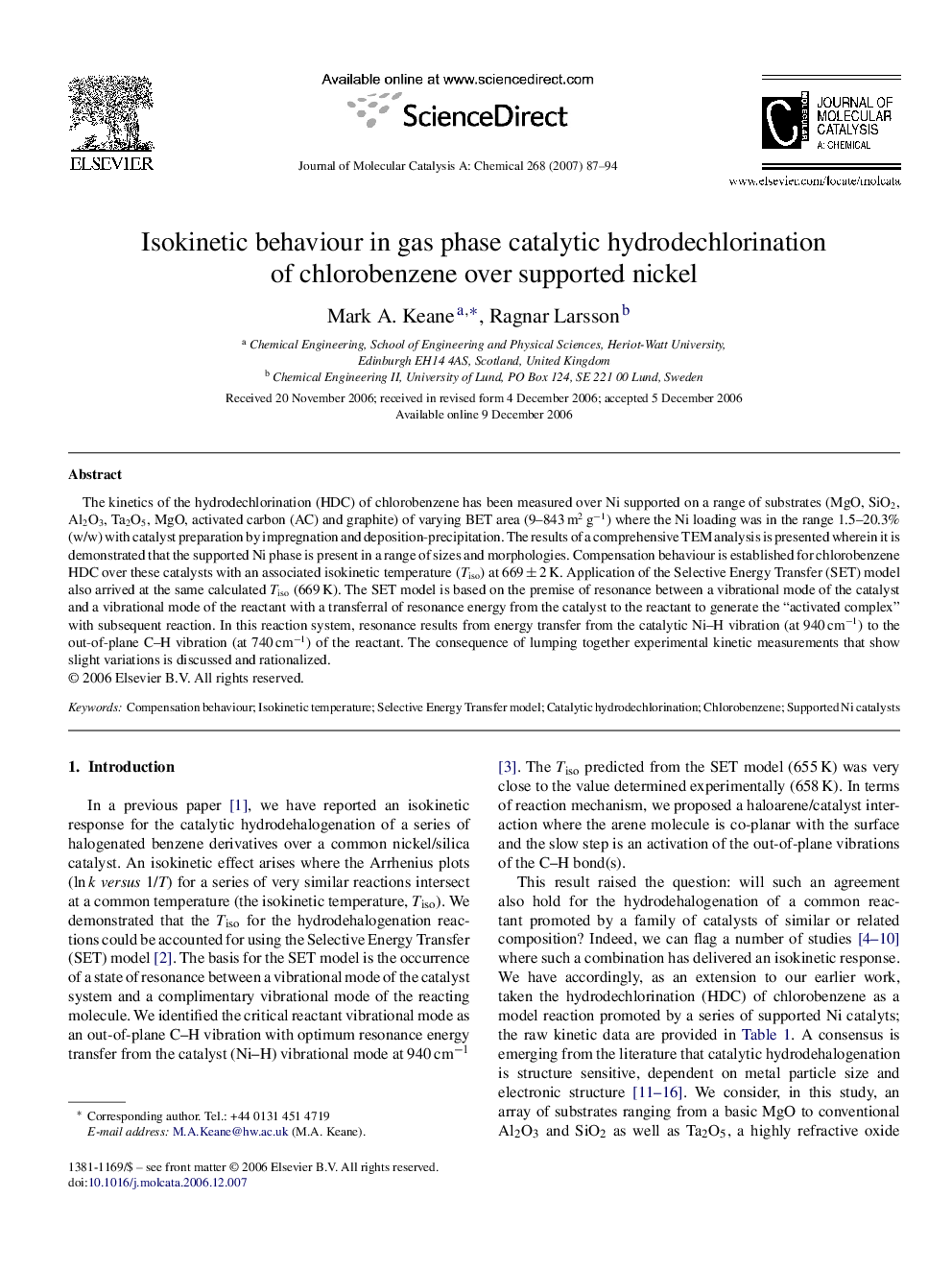| کد مقاله | کد نشریه | سال انتشار | مقاله انگلیسی | نسخه تمام متن |
|---|---|---|---|---|
| 67940 | 48499 | 2007 | 8 صفحه PDF | دانلود رایگان |

The kinetics of the hydrodechlorination (HDC) of chlorobenzene has been measured over Ni supported on a range of substrates (MgO, SiO2, Al2O3, Ta2O5, MgO, activated carbon (AC) and graphite) of varying BET area (9–843 m2 g−1) where the Ni loading was in the range 1.5–20.3% (w/w) with catalyst preparation by impregnation and deposition-precipitation. The results of a comprehensive TEM analysis is presented wherein it is demonstrated that the supported Ni phase is present in a range of sizes and morphologies. Compensation behaviour is established for chlorobenzene HDC over these catalysts with an associated isokinetic temperature (Tiso) at 669 ± 2 K. Application of the Selective Energy Transfer (SET) model also arrived at the same calculated Tiso (669 K). The SET model is based on the premise of resonance between a vibrational mode of the catalyst and a vibrational mode of the reactant with a transferral of resonance energy from the catalyst to the reactant to generate the “activated complex” with subsequent reaction. In this reaction system, resonance results from energy transfer from the catalytic Ni–H vibration (at 940 cm−1) to the out-of-plane C–H vibration (at 740 cm−1) of the reactant. The consequence of lumping together experimental kinetic measurements that show slight variations is discussed and rationalized.
The experimentally determined kinetics (see Fig.) for the gas phase hydrodechlorination of chlorobenzene over a series of supported Ni catalysts delivers an isokinetic temperature (Tiso) at 669 ± 2 K which is accounted for using the Selective Energy Transfer model in terms of resonance resulting from energy transfer from a catalytic Ni–H vibration (at 940 cm−1) to the out-of-plane C–H vibration (at 740 cm−1) of chlorobenzene.Figure optionsDownload as PowerPoint slide
Journal: Journal of Molecular Catalysis A: Chemical - Volume 268, Issues 1–2, 1 May 2007, Pages 87–94